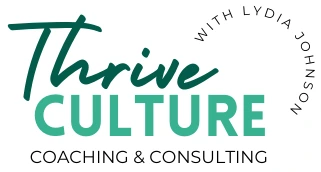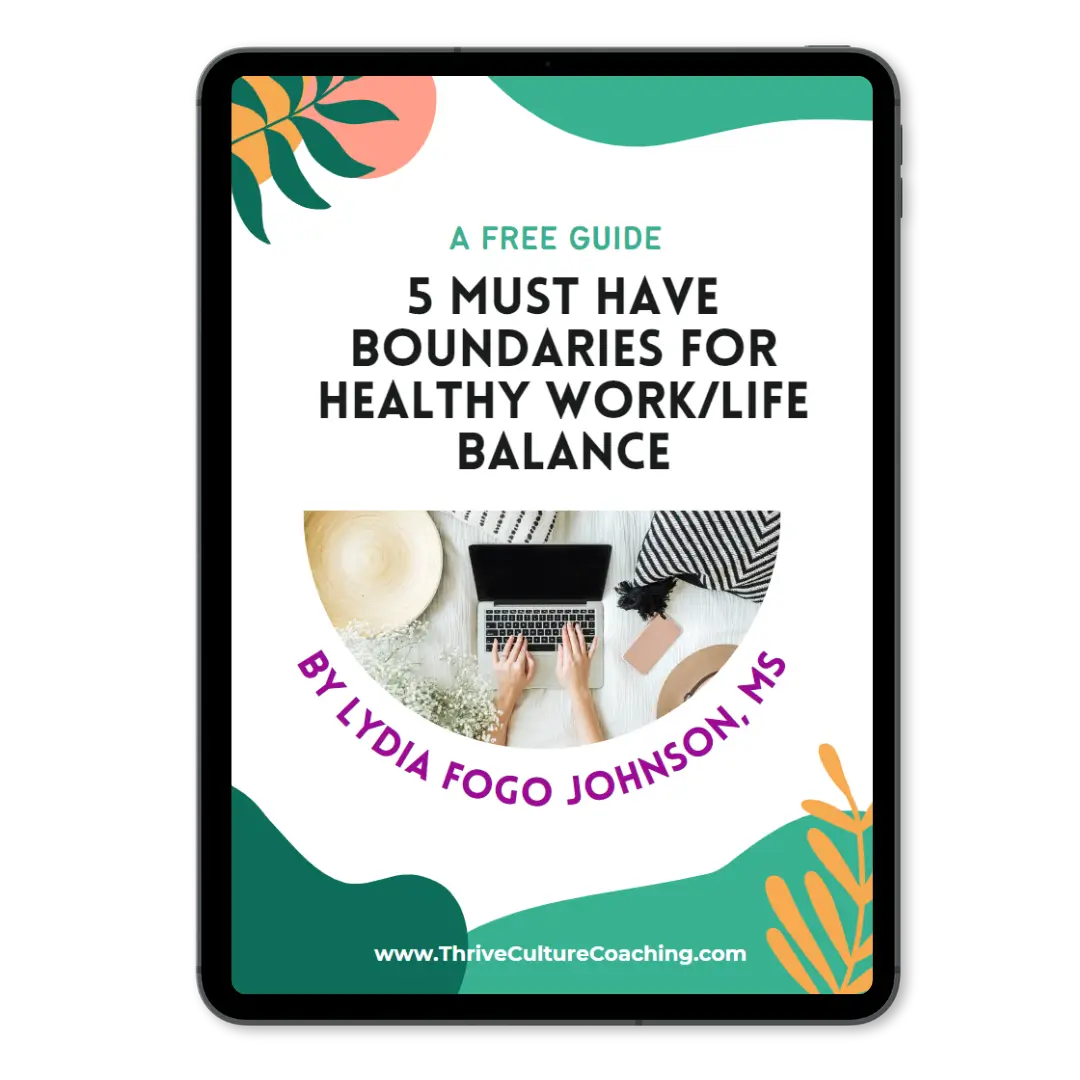Table of Contents
Peer advisory groups are small, curated circles of professionals who regularly meet to help one another navigate work challenges, exchange advice, and offer outside perspectives.
They’re your personal board of advisors. A place to stop white-knuckling your way through hard decisions and start getting the kind of insight that only comes from real experience.
They’re especially powerful for women in leadership roles, or those balancing high-pressure jobs with caregiving responsibilities. Because let’s be honest – most of us are tired of trying to do it all alone.
Which brings me to a surprising place where I was reminded how powerful shared wisdom can be: my kid’s daycare.
This morning, I actually remembered to send my toddler to daycare in his swimsuit for water day. Not because I’m a #supermom who is always on top of things, but because of a brilliant sticker system the daycare uses. They slap a reminder sticker between the kids’ shoulder blades — the one spot little hands can’t reach.
I like to imagine the idea was born during a staff snack break. One worker venting, “Another kid showed up without their swimsuit,” and someone else chiming in, “Oh! I figured that one out. Just slap a sticker where they can’t reach it.”
Simple. Effective. Shared wisdom in action.
That’s what peer groups are built on.
In the rest of this article, I’ll show you how they work, why they’re especially helpful for women, and how to find or create one that fits your goals.
Why Peer Advisory Groups Are Game-Changing for Women in Leadership
The leadership journey, while rewarding, can often feel solitary. For women navigating unique challenges and opportunities, joining a peer advisory group is more than just networking—it’s a strategic investment in accelerated professional growth. These confidential forums provide a powerful opportunity to learn from a trusted brain trust of equals, creating a dedicated space to tackle complex business challenges and refine personal leadership skills. Here are the key reasons why this experience is so transformative.
Burnout is isolating – peer groups cut through it
Research shows that women are 32% more likely to experience burnout than men. And for mothers? 9 in 10 report feeling unseen, unacknowledged, and exhausted at least some of the time.
When we talk about career or leadership stress, we usually focus on the workload — the meetings, the deadlines, the never-ending to-do list. But what often gets overlooked is the loneliness. That feeling that you’re the only business leader struggling to keep up while everyone else seems to be doing just fine.
Peer advisory groups break that cycle of isolation. They offer:
Emotional validation
Sometimes, what you need most isn’t a strategy — it’s someone saying, “You’re not crazy. That’s hard.” Peer advisory groups offer real empathy, not just fixes. They remind you that you’re not the problem, and that reminder is powerful. Because when things start to go south, high-achieving women often blame themselves first. Being seen and understood interrupts that spiral.
Shared experience
Peer advisory groups are intentionally curated by a skilled facilitator to bring together people with similar goals, challenges, or career stages. That’s what makes the conversations so valuable: the stories and insights shared actually resonate, and are often exactly what you needed to hear. For example, in my She Leads Well program, we have circle meetings that function as a peer advisory group for female leaders, where finding the right peer is a core part of the design, and everyone who attends is a woman in leadership who wants to reduce burnout and create more sustainability in their career and leadership.
Fresh insights
You’re close to your challenges. Others aren’t. That distance allows peers to bring creative solutions and new angles you might never consider on your own.
No competing agendas
Peer advisory groups don’t come with office politics. No one’s trying to one-up you or impress the boss at your expense — just real people, showing up to support each other in a safe, confidential space.
Accountability and momentum
Knowing that someone will ask how it went next time you meet? That’s motivation. Peer groups help you follow through and stay out of decision paralysis.
You’re not meant to carry it all alone. Peer advisory groups remind you of that — not just by helping you solve problems, but by surrounding you with people who “get it.” For high-achieving women juggling careers, caregiving, and everything else, that kind of support isn’t a luxury. It’s necessary.
3 Ways to Build or Join Your Own Peer Advisory Group
1. Leverage what already exists
Before you start from scratch, see if there are already communities or structures around you that you can plug into.
Inside your organization, look for:
- Employee resource groups or affinity networks
- Slack channels for specific teams or interest groups
- Regular cross-functional brainstorming sessions
- Informal office hours or virtual coworking times
These are often underutilized spaces where real connection and collaboration can flourish — if someone takes the initiative to use them with intention.
Outside your organization, try:
- Posting on LinkedIn to ask if others in your network know of a trusted group
- Joining alumni groups or professional associations in your industry
- Looking for professional meet ups, collaboration events, or online communities
Don’t overthink it — sometimes all it takes is one thoughtful ask to start a ripple of interest and support.
2. Start your own (small is fine)
If you can’t find what you need, create it. You don’t need a polished agenda or perfect group makeup. Here are some ideas to get you started:
- Reach out to 2–4 trusted peers—maybe peers at other companies, people you’ve connected with at conferences, or colleagues in complementary roles.
- Structure it clearly: Aim for a 45‑minute session with a single agenda item. One person presents a challenge (30 minutes), and everyone else offers ideas (15 minutes).
- What to say when inviting:
“Hey [name], I’ve noticed we face similar challenges in [area]. Would you be open to a monthly ‘Creative Problem‑Solving Hour’ where one of us brings a case and the rest brainstorms ideas? No more than 45 minutes, and totally low‑key. - What to call it: Don’t get hung up on this step! Call it “Creative Problem-Solving Hour,” “HR Consulting Club,” or whatever feels fun and keeps you showing up.
Over time, you can rotate hosts, add topics, or bring in short learning segments. The key ingredients? Trust, consistency, and shared intent.
3. Join a guided peer group (like She Leads Well)
Sometimes, what you really need is structure and skilled facilitation — especially if you’re navigating something complex like burnout, career transitions, or leadership growing pains.
That’s why I built bi-weekly Circle Calls into She Leads Well. These sessions aren’t about adding more to your plate. They’re about giving you a sounding board of like-minded women who can help carry the load.
One client recently shared:
“I have this huge event at work next week and my calendar is chaos… but I made time for this call anyway because it’s always worth it. These conversations always help me feel less overwhelmed and more energized.”
Because sometimes, the most valuable thing isn’t advice — it’s knowing you’re not figuring it out alone.
Here’s how my Circle Calls work in She Leads Well:
- Who’s there: All members are fellow ambitious women, female leaders and working moms managing careers, leadership, family life, and everything in between.
- Format: A tight 60‑minute hot-seat style session where 1-3 members bring a topic, question or challenge to discuss; the rest dive in with questions, reflections, and ideas.
- Facilitation: I kick off the group with coaching prompts to help everyone reflect on their current challenges and stressors. Then, we dive into hot seat discussions. While I will ask questions and offer insight, much of the wisdom comes from the fellow members within the group.
- Benefits:
- Collaborative wisdom: See how someone handled a similar situation in marketing, education, tech, or non‑profit—and map it onto your world.
- Reduced isolation and more energy: Everyone (including me!) walk away from these calls with more pep in their step because they spent an hour truly connecting with others who get what they’re going through.
- Real breakthroughs: Over time, members report less stress, more clarity, and quicker progress by tapping into the group’s experience.
Your Turn
We’ve covered many compelling reasons to join a peer advisory group, from cutting through isolation to gaining fresh perspectives. Now, it’s your turn.
If you’re a business owner or one of the many ceos feeling stuck, overwhelmed by all the options, or like you’re carrying too much without a place to process — ask yourself:
- Who could I reach out to this week just to talk it through?
- What existing space could I plug into or revive?
- What’s one tiny step I could take to feel less alone in this?
You don’t need to have all the answers. You just need a space where asking better questions feels safe — and where you’re reminded that support isn’t a luxury… it’s a strategy for both your business and your personal growth.
And if you’re craving that kind of support? Book a free consult call and let’s talk about whether She Leads Well could be a good fit for you.




Share